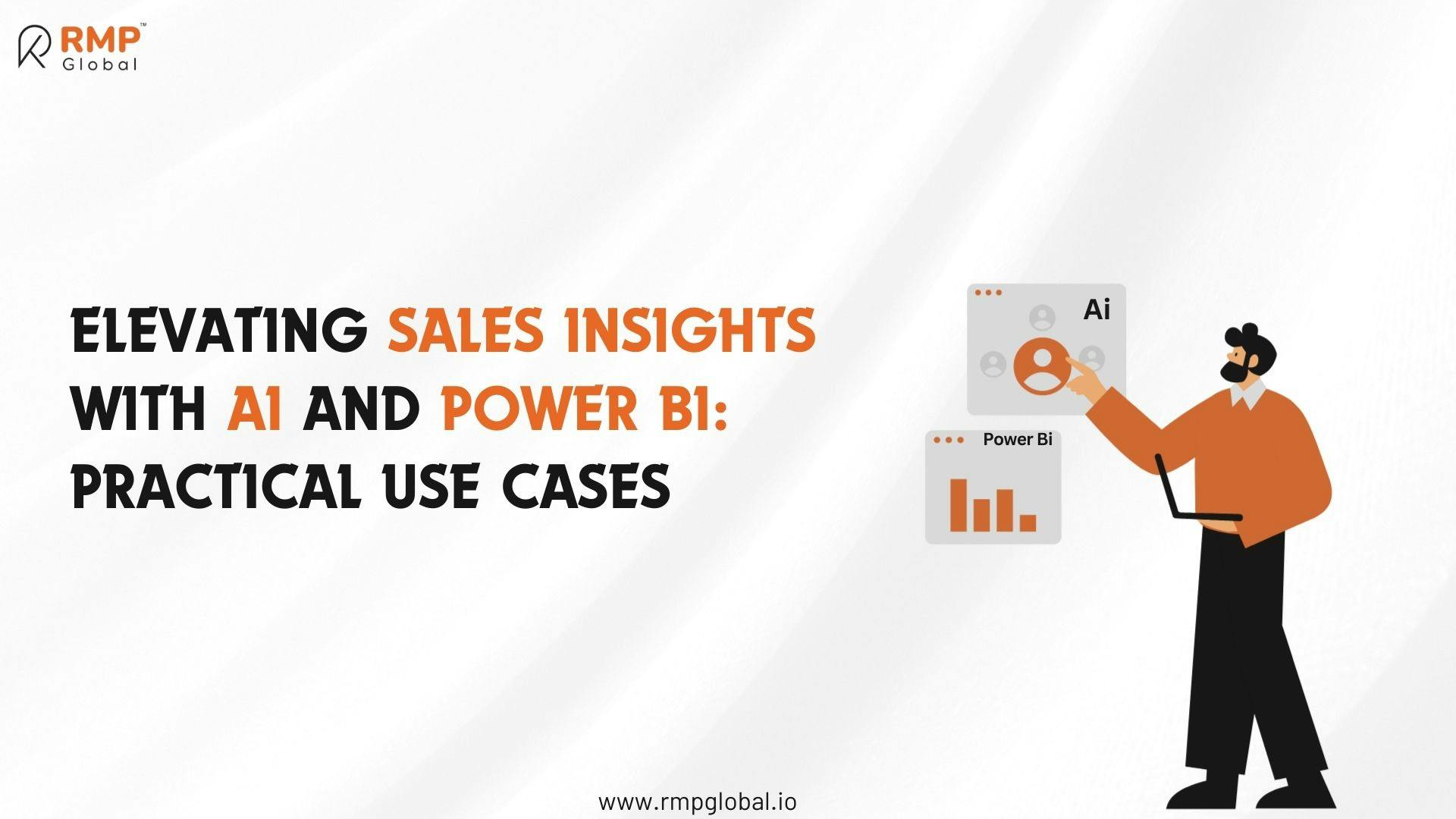
Share
In today's competitive business landscape, leveraging advanced technologies for sales analysis has become essential for organizations aiming to optimize their strategies and drive growth. Two powerful tools that have emerged as game-changers in this domain are AI and Power BI. AI uses cutting-edge artificial intelligence to generate human-like text and provide valuable insights through natural language processing. Meanwhile, Power BI, a robust business analytics tool by Microsoft, enables organizations to visualize and share data insights through interactive dashboards and reports.
The integration of AI and Power BI offers a comprehensive approach to sales analysis, combining AI-driven insights with advanced data visualization capabilities. This synergy not only enhances the efficiency of sales operations but also empowers sales teams with real-time data, predictive analytics, and personalized customer insights. By automating repetitive tasks, identifying market trends, and providing interactive visualizations, the combination of AI and Power BI revolutionizes how businesses approach sales analysis, ultimately leading to more informed decision-making and improved sales performance.
Five Ways AI is Helpful for Sales Analysis
- Automated Customer Interactions:
AI can handle customer queries through chatbots, providing instant responses and personalized recommendations. This automation enhances customer satisfaction and frees up sales teams to focus on more complex tasks.
- Understanding AI Technology:
AI is trained on diverse text data, enabling it to grasp context, syntax, and semantics. It generates responses based on the input it receives. Making it effective for automating customer interactions, lead generation, and sales forecasting.
- Benefits of AI in Sales Analysis:
Integrating AI into sales analysis automates tasks such as customer queries, lead qualification, and market trend analysis. It provides real-time insights for sales strategies, personalized customer recommendations, and predictive analytics for future sales.
- Challenges of Implementing AI in Sales Analysis:
Implementing AI in sales analysis presents challenges like data privacy concerns, ethical considerations, and the need for skilled professionals to manage and interpret AI-generated outputs accurately.
- Market Trend Analysis:
AI can process and interpret large volumes of market data, identifying emerging trends and providing insights into customer preferences. This information is crucial for adapting sales strategies and staying competitive.
The Role of Power BI in Sales Analysis
- Interactive Dashboards and Reports:
Power BI enables the creation of interactive dashboards that provide real-time insights into sales performance. These dashboards help sales teams track key metrics, monitor progress, and make data-driven decisions.
- Data Integration from Multiple Sources:
Power BI can integrate data from various sources, such as CRM systems, financial databases, and social media platforms. This comprehensive data integration offers a holistic view of sales operations and customer behaviour.
- Importance of Data Visualization in Sales Analysis:
Data visualization is crucial in sales analysis as it simplifies complex data, helps identify trends, and supports informed decision-making. Power BI's interactive visualizations enable sales teams to explore data, identify patterns, and uncover insights that drive growth.
- Integration with AI for Enhanced Insights:
Integrating Power BI with AI enhances data analysis capabilities. AI can analyse textual data from customer interactions or market research reports, providing insights that are visualized in Power BI dashboards, combining AI-driven insights with interactive data visualization.
Conclusion
The combination of AI and Power BI in sales analysis empowers sales teams to optimize strategies, drive revenue growth, and deliver exceptional customer experiences. This integration leverages AI and data visualization for comprehensive sales insights.
This article is only a knowledge-sharing initiative and is based on the Relevant Provisions as applicable and as per the information existing at the time of the preparation. In no event, RMP Global or the Author or any other persons be liable for any direct and indirect result from this Article or any inadvertent omission of the provisions, update, etc if any.
